MercoPress. South Atlantic News Agency
Tag: Royal Navy
-
Tuesday, December 9th 2025 - 23:49 UTC
HMS Lancaster, once on South Atlantic Patrol, ends 34 years of exceptional service
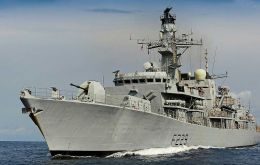
HMS Lancaster, at times on South Atlantic patrol and visiting the Falkland Islands, has ended in Bahrein the busiest and longest careers of any major British warship.
-
Monday, November 24th 2025 - 19:22 UTC
Royal Navy changes rules of engagement following incident with Russian spy vessel
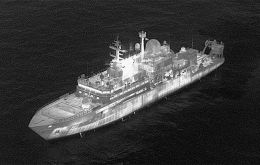
The Royal Navy's rules of engagement have been changed in response to the Russian intelligence-gathering ship Yantar directing lasers at RAF pilots. According to Forces.news UK Defense Secretary John Healey said the vessel was currently positioned on the edge of British territorial waters and was being closely tracked by Royal Navy warships and RAF P-8 Poseidon aircraft.
-
Monday, November 3rd 2025 - 20:05 UTC
US Navy's and Royal Navy begin trials with un-crewed vessels
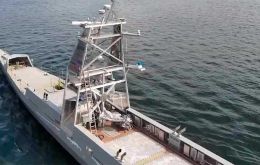
USX-1 Defiant is a prototype of the US program to develop autonomous vessels with no need for physical crews. She is the first US naval surface vessel ever built to operate without room or provisions for human crew.
-
Wednesday, October 22nd 2025 - 07:36 UTC
UK celebrates 220th anniversary of British victory at the Battle of Trafalgar
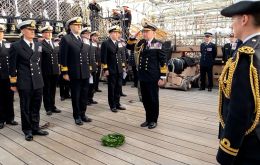
Trafalgar Day is an annual celebration of British victory over the French and Spanish fleets by the Royal Navy in the 19th Century. On 21 October 1805, Royal Navy Commander Vice-Admiral Horatio Nelson's fleet defeated the Franco-Spanish fleet that was attempting to invade the United Kingdom.
-
Saturday, October 18th 2025 - 06:10 UTC
HMS Westminster heads for retirement and disposal as she's towed to Portsmouth
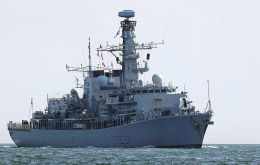
The former Royal Navy frigate HMS Westminster has been towed out of Devonport on her way to Portsmouth, where she will be prepared for disposal. She joins HMS Argyll, HMS Montrose, and HMS Northumberland, as the Navy continues to retire its older Type 23 frigates, reports Forces News.
-
Monday, September 22nd 2025 - 23:09 UTC
Last Falklands War submariner (Churchill and Vanguard Classes) retires after 46 years RN

The last serving Falklands War submariner from HMS Conqueror has retired after 46 years in the Royal Navy. Chief Petty Officer (CPO) Gary Hutchinson, 64, was honored during a ceremony at HM Naval Base Clyde (HMNB Clyde) held last week.
-
Monday, September 22nd 2025 - 22:13 UTC
First Sea Lord simple principle: “un-crewed wherever possible; crewed only where necessary”

The head of the Royal Navy has laid down his bold vision to redefine naval operations through drastic technological innovation as he aims to get the Senior Service ready for warfighting within four years, pointed out Forces.net.
-
Wednesday, August 20th 2025 - 09:02 UTC
“Failures regarding the Royal Fleet Auxiliary leave the Royal Navy exposed,” security expert Professor Clarke

Britain’s Carrier Strike Group's participation in Operation Highmast is a “sparkling example” of the Royal Navy's “shop window”, but the deployment also reveals the depleted state of our domestic maritime defenses, a UK security expert has told BFBS Forces News.
-
Wednesday, August 6th 2025 - 07:21 UTC
Falklands congratulates RFA on its 120th anniversary: Be it war or natural disasters, they are always there
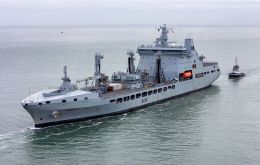
The Falkland Islands Government Office in London, FIGO, has wished the RFA.(Royal Fleet Auxiliary) Headquarters a very happy 120th birthday, The wishes in the name of all the Falklands, remember RFA played a crucial role to the Liberation of the Islands in 1982.
-
Saturday, June 14th 2025 - 08:13 UTC
Final farewell for an Iconic Falklands War destroyer HMS Bristol
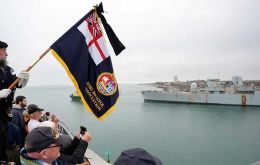
A Royal Navy destroyer that participated in the Falklands War left Portsmouth Harbor on Friday, June 13th, and is travelling to Turkey, where she will be recycled. A small group of spectators came to see HMS Bristol, the only Type 82 ever built of her class, being towed out of Portsmouth Harbor to start her journey to an EU-approved recycling yard in Turkey.
